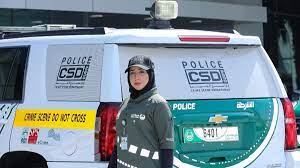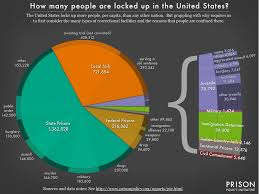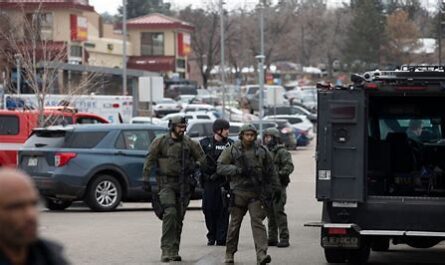Introduction

First responding officers play a critical role in crime scene investigation, as they are often the first to arrive at the scene of a crime. Their actions and decisions can significantly impact the integrity of evidence and the success of the investigation. This essay explores the primary duties and responsibilities of first responding officers in crime scene investigation, emphasizing the importance of thoroughness, professionalism, and attention to detail.
Arrival at the Crime Scene:
Upon receiving a call, first responding officers must promptly proceed to the crime scene, ensuring their safety and the safety of others.
Upon arrival, they must assess the situation, secure the perimeter, and establish control over the scene to prevent contamination or tampering of evidence.
Communicating with dispatch and coordinating additional resources, such as backup officers, medical personnel, or forensic specialists, may be necessary depending on the nature of the crime.
Preservation of the Crime Scene:
First responding officers must take steps to preserve the integrity of the crime scene by limiting access to authorized personnel only.
They should document any changes or disturbances to the scene, such as movements of objects or footprints, to aid in reconstruction and analysis.
Erecting physical barriers, such as crime scene tape, and maintaining a log of individuals entering and exiting the scene helps ensure accountability and prevent contamination.
Protection and Preservation of Evidence:
Recognizing and identifying potential evidence is crucial for first responding officers. They must take care not to disturb or alter evidence while securing the scene.
Utilizing personal protective equipment (PPE) and following proper protocols, such as avoiding direct contact with evidence or wearing gloves, helps minimize contamination.
Photographing the scene from multiple angles and distances, including close-up shots of relevant items or injuries, aids in documentation and analysis.
Initial Assessment and Documentation:
Conducting a preliminary walkthrough of the scene allows first responding officers to assess the extent of the crime and identify key areas of interest.
Documenting observations, such as the location and condition of victims, potential weapons, or signs of forced entry, provides valuable information for investigators.
Recording witness statements, collecting identification information, and securing any relevant documents or objects can aid in establishing timelines and identifying suspects.
Coordination with Investigative Teams:
Collaborating with investigative teams, including detectives, forensic specialists, and medical examiners, is essential for gathering comprehensive evidence and building a case.
Providing detailed reports and briefing investigators on observations, findings, and witness statements facilitates the continuity of the investigation and ensures all relevant leads are pursued.
Maintaining open communication channels and sharing information in a timely manner enhances coordination and promotes effective decision-making throughout the investigative process.
Post-Scene Procedures:
After completing initial duties at the crime scene, first responding officers may be required to follow up on leads, assist with witness interviews, or provide support to investigative teams as needed.
Documenting actions taken, observations made, and any challenges encountered during the investigation helps in evaluating the effectiveness of response protocols and identifying areas for improvement.
Participating in debriefings or critical incident reviews allows officers to reflect on their performance, share lessons learned, and identify best practices for future responses.
Initial Assessment and Scene Management:
Prompt Response: Upon receiving a call, first responding officers must swiftly proceed to the scene, adhering to traffic laws and safety protocols.
Scene Evaluation: Upon arrival, officers conduct a rapid assessment to ascertain the nature of the incident, potential hazards, and the need for additional resources.
Perimeter Control: Establishing and securing the perimeter of the crime scene is paramount to prevent unauthorized access and preserve evidence integrity.
Safety Measures: Ensuring personal safety and the safety of bystanders by identifying and mitigating any immediate dangers or threats.
Preservation and Protection of Evidence:
Evidence Identification: Training and experience enable officers to recognize and prioritize potential evidence, ranging from physical objects to biological samples.
Non-Contamination Protocols: Adherence to strict protocols, including wearing gloves, avoiding unnecessary contact, and minimizing movement within the scene, to prevent contamination.
Documentation: Methodical documentation of the scene through written notes, sketches, and photographs, capturing the spatial relationships and condition of evidence.
Crime Scene Documentation and Recording:

Photographic Documentation: Comprehensive photography of the entire scene, focusing on different angles, distances, and close-ups of relevant evidence, aids in reconstruction and analysis.
Videography: Utilization of video recording for real-time documentation of the scene, providing additional context and capturing dynamic elements.
Sketching and Diagramming: Creating accurate sketches or diagrams of the scene, depicting the layout, measurements, and placement of key elements for later analysis.
Witness and Victim Management:
Interviewing Witnesses: Conducting structured interviews with witnesses to gather information regarding the sequence of events, descriptions of suspects, or other pertinent details.
Victim Care: Providing immediate medical assistance and emotional support to victims, ensuring their well-being while preserving potential evidence.
Securing Statements: Recording detailed statements from witnesses and victims, ensuring accuracy and relevance to the investigation.
Evidence Collection and Preservation:
Chain of Custody: Maintaining a meticulous chain of custody for all collected evidence, documenting each transfer or handling to ensure its admissibility in court.
Packaging and Labeling: Properly packaging and labeling each item of evidence to prevent contamination, deterioration, or loss during transportation and storage.
Biological Evidence Handling: Special care in handling biological evidence to preserve DNA integrity, including using sterile tools and packaging materials.
Collaboration and Reporting:

Interagency Coordination: Collaboration with specialized units, such as forensic teams, detectives, and medical examiners, to leverage expertise and resources in the investigation.
Timely Reporting: Providing accurate and detailed reports to supervisory personnel and investigative teams, summarizing observations, actions taken, and initial findings.
Briefing and Debriefing: Conducting briefings to update stakeholders on the status of the investigation and participating in debriefings to analyze lessons learned and identify areas for improvement.
Conclusion:
First responding officers serve as the frontline in crime scene investigation, tasked with preserving the integrity of evidence, protecting the scene, and facilitating the investigative process. Their primary duties include securing the scene, protecting and preserving evidence, documenting observations, coordinating with investigative teams, and following up on leads. Through professionalism, attention to detail, and effective communication, first responding officers play a vital role in ensuring the success of criminal investigations and the pursuit of justice.



